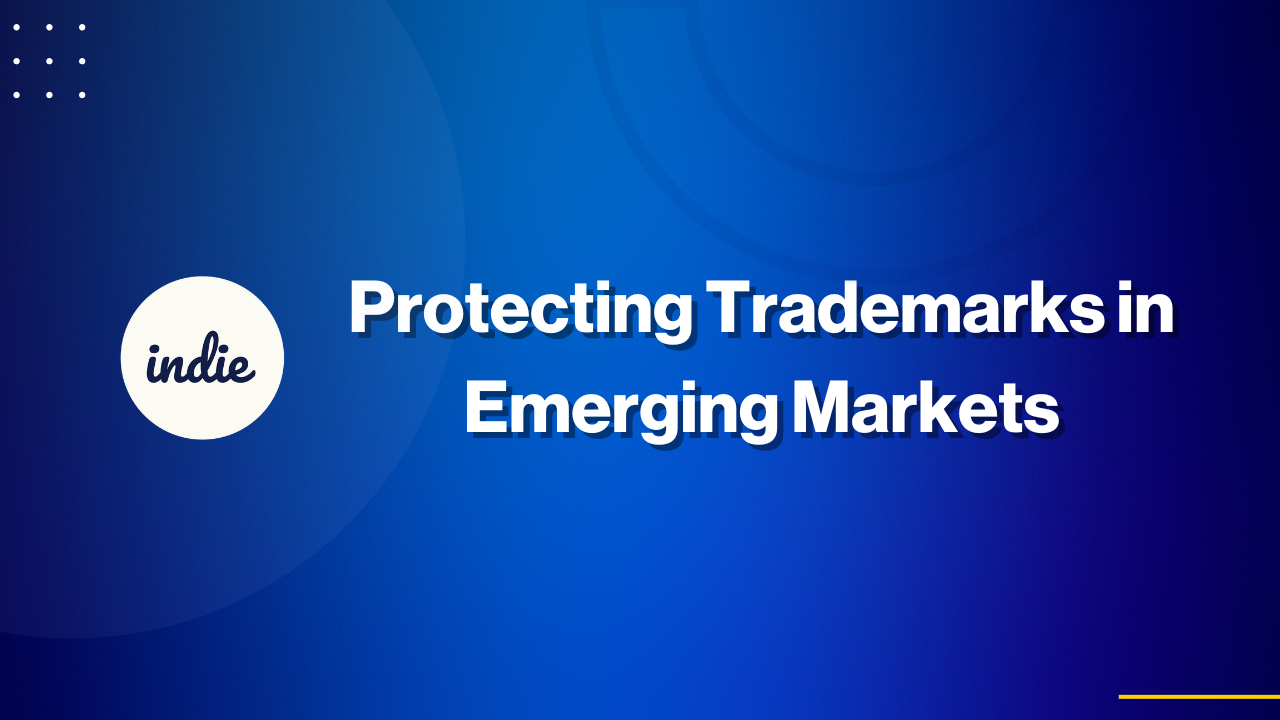Let’s explore how to keep your brand safe and secure in these new markets!
Why Emerging Markets are Exciting (and Risky!)
Emerging markets like India, Brazil, and Vietnam are growing fast. They’re full of new customers who are eager to try your products. In fact, according to a 2024 McKinsey report, consumer spending in emerging markets is expected to reach $30 trillion by 2030. That’s a huge opportunity!
But with this growth comes some risk. Many businesses face trademark problems when they expand to these markets:
-
Copycats: Local companies might copy your brand’s name or logo.
-
Slow trademark offices: In some countries, trademark registration can take years.
-
Limited enforcement: It can be tough to stop others from using your trademark.
What is a Trademark?
Let’s start with the basics. A trademark is a unique symbol, word, or design that helps customers recognize your brand. Think of the Nike swoosh or the golden arches of McDonald’s.
When you own a trademark, you have the exclusive right to use it for your goods or services. This means no one else can use your logo or name without your permission.
The Challenges in Emerging Markets
In emerging markets, there are a few special challenges to watch out for:
-
Trademark Squatting: This happens when someone else registers your trademark in their country before you do.
-
Language and cultural differences: Your brand’s name might have different meanings in another language!
-
Limited resources for enforcement: Some countries don’t have strong systems to help you fight back.
A recent report by the World Intellectual Property Organization (WIPO) showed that trademark filings in emerging economies increased by 13% in 2023 alone, making it more important than ever to protect your brand early.
Key Steps to Protect Your Trademark
Here’s what you can do to protect your brand in emerging markets:
1. Register Early and Widely
-
First-to-File Rule: Many emerging markets use a “first-to-file” system. This means whoever files for the trademark first usually gets the rights. So don’t wait—file as soon as possible.
-
Work with Local Experts: Local trademark attorneys know the rules in each country and can help you avoid mistakes.
Example: If you’re expanding to China, be sure to file your trademark with the China National Intellectual Property Administration (CNIPA). In 2023, China saw over 8 million trademark applications—that’s a lot of competition!
2. Do a Trademark Search
Before you apply, check if your brand’s name is already registered. This helps you avoid legal fights later.
Pro Tip: Use tools like the WIPO Global Brand Database to check trademarks in different countries.
3. Translate and Localize Your Brand
Your trademark might need to be adapted for the local language or culture. This can help avoid misunderstandings and make your brand more appealing.
For example, Coca-Cola is called “Kekou Kele” in China, which means “tasty and fun.”
4. Monitor and Enforce
-
Watch for Infringement: Regularly check if anyone is using your brand name or logo without permission.
-
Send Cease-and-Desist Letters: If you find someone misusing your trademark, take action quickly.
-
Work with Local Agencies: Many countries have local trademark offices and enforcement agencies that can help you protect your rights.
5. Use Your Trademark
Some countries require you to actually use your trademark to keep it active. This means selling your products or services under that trademark in the country.
Legal Tools for Enforcement
If you find someone infringing on your trademark, you have some legal tools:
-
Administrative Actions: Many countries let you file complaints with the trademark office.
-
Civil Lawsuits: You can go to court to stop the misuse.
-
Border Measures: Customs can help you block fake goods at the border.
For example, in India, trademark owners can work with the Customs Department to seize counterfeit goods, which can save your business a lot of money.
The Role of International Treaties
Good news! There are international treaties that can help you protect your trademark in many countries at once:
-
The Madrid System: This treaty lets you file a single international trademark application to protect your brand in over 100 countries.
-
The Paris Convention: This treaty gives you a 6-month priority window to file your trademark in other countries.
Fact: In 2023, over 70% of international trademark filings used the Madrid System, showing how useful it is for global expansion!
Final Thoughts: Your Brand is Worth Protecting
Expanding to emerging markets can be exciting, but don’t let trademark problems slow you down. By registering early, working with local experts, and keeping an eye out for misuse, you can protect your brand and grow with confidence.
Remember, your brand is one of your most valuable assets. Take the time to protect it!
Key Takeaways
-
Emerging markets are growing fast, but also have more trademark risks.
-
File your trademark early and work with local attorneys.
-
Monitor and enforce your trademark to keep it safe.
-
Use international treaties to protect your brand globally.

